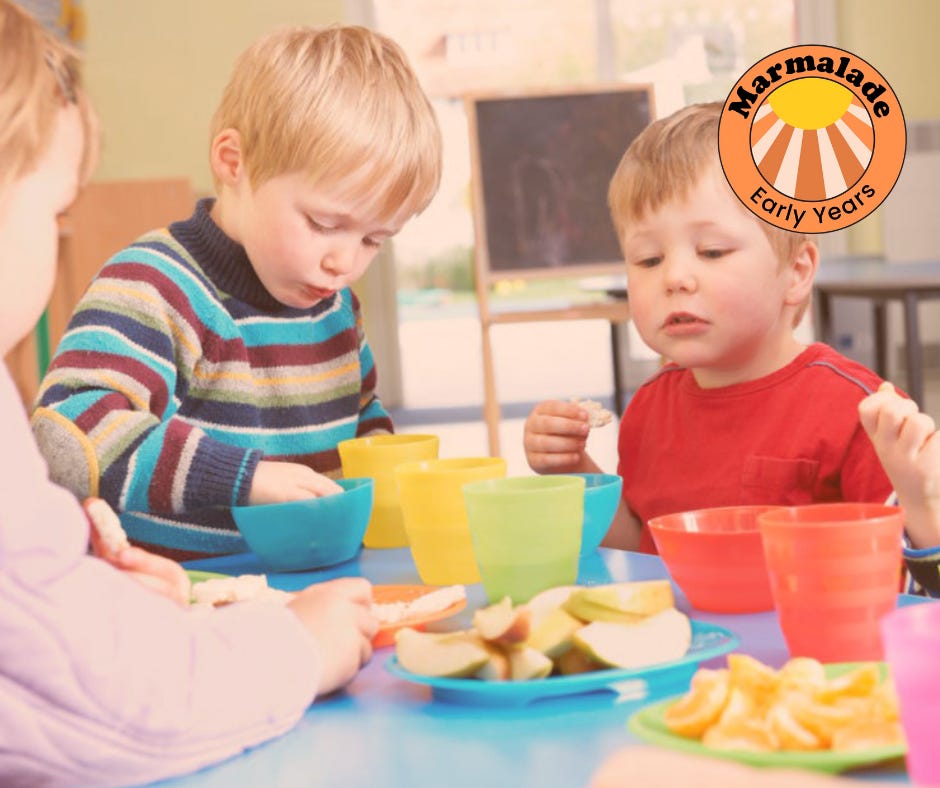Building Vocabulary at Mealtimes
Slow down snack time. Make it meaningful.
Rather than treating it as a quick pit stop, use snack time as a rich opportunity for connection, conversation and communication. Sit with the children. Be present. This is a golden moment to model language, support turn-taking and build independence.
Narrate what you see using rich descriptive vocabulary:
“You are pouring the water carefully into your cup.”
“That apple looks really crunchy. Can you hear the sound it makes when you bite it?”
“Your banana is soft and squishy inside.”
Repeat key words often and in context. This is how children internalise them. Use sensory language that feels relevant and understandable. Words like crispy, smooth, sticky, warm, juicy, crumbly, spicy and salty are useful and engaging.
Support children to express themselves.
Encourage them to describe their food:
• “I like strawberries. They are sweet and soft.”
• “My cracker is crunchy.”
Offer sentence starters such as:
• “I need more”
• “Can I have”
• “It tastes like”
Model conversational turn-taking by commenting, pausing and inviting children in:
“I wonder who else has grapes today”
“That looks interesting. What are you eating”
You can also bring in gentle routines around manners and listening:
“Let’s listen to our friend while they are talking”
“You asked so kindly. Here is some more”
Snack time is not just a break. It is a chance to build communication skills, social confidence and emotional connection. When we slow down and share the moment we give children so much more than food.
You can extend language by weaving it into everyday moments like pretend café play, snack-time storybooks or looking at photos from home. Display pictures of children enjoying food with their families to help them make connections between home and nursery. These shared images spark conversation and help children feel seen.
Use sound buttons with recorded food words that children can press and listen to. Hearing words like banana, crunchy or spoon in context supports listening and repetition. It helps children connect spoken language with real experiences and builds confidence in using new vocabulary.
Food play is also a powerful way to support children who are learning English as an additional language. Repetitive routines, real objects and meaningful experiences help new words stick. Learn and use food words from the home languages spoken in your setting to show children and families that their language and culture are respected and included.
Quick Ideas:
Create a “Today’s Snack” photo board with a sound button underneath.
Use real or pretend food to introduce simple describing words: juicy, red, round.
Encourage children to share what they like and listen to their peers.
Add food-related storybooks like Oliver’s Vegetables to prompt discussion.
Try a “what’s in the bag?” food-feeling game for naming and guessing foods.






